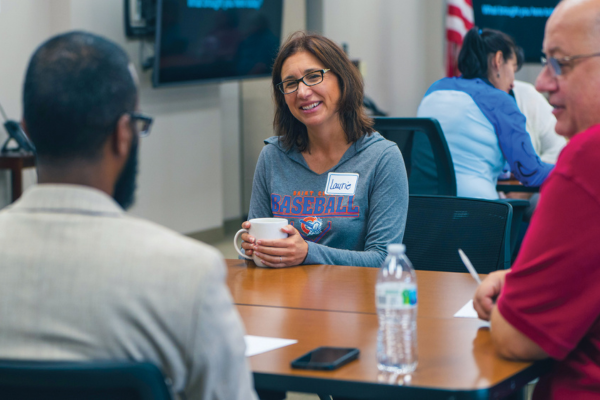Our Campaign To Show How Leaders Matter
December 01, 2018
Executive Perspective
My parents were proud of me when I became a teacher and then moved into administration. They were aware I was in a Ph.D. program that would lead to further advancement.
When I called my mother to proudly inform her that I had been appointed
superintendent of the Deer Park School District in New York, I heard a deafening silence at the other end. I asked her if she had heard me, and she finally replied, with an edge to her voice, “Son, after all of these years of study, you have
accepted a job as a superintendent?”
As a New York City resident, my mother knew the superintendent as the individual who maintained the buildings we lived in. She was perplexed as to why I had made such a drastic change in occupation.
A Role Explained
Like my mother, many people do not really know what the superintendent does. Friends who knew the superintendent was the person in charge of the school district still assumed I had a regular school day schedule and my hours ended when school let out,
plus I had summers off.
Earlier this year, AASA launched the Leaders Matter campaign to better inform the public about the role and responsibilities
of the superintendent and to highlight outstanding education leaders who are making a difference in the lives of millions of children. Four such examples follow.
Mary Sieu has been the superintendent of the ABC Unified
School District outside Los Angeles since 2012. As the daughter of an immigrant family from China, she learned English as a second language in the Chicago Public Schools and was inspired to become a teacher by the wonderful teachers and principals
in her schools.
Though she grew up in poverty, Sieu believed demographics do not determine destiny. She proved that in her own case and was determined to make that belief a reality for the ethnically diverse and low-income students in the
ABC communities. Today, the district boasts of a 98 percent high school graduation rate with zero expulsions for the past six years. Sieu’s leadership matters, and she has been recognized by her colleagues who selected her to be the 2017 California
Superintendent of the Year and a finalist for National Superintendent of the Year®.
David Schuler has been the superintendent of
Township High School District 214 outside Chicago since 2005. Schuler, the 2018 National Superintendent of the Year®, has taken the lead in launching the
Redefining Ready! campaign that has been adopted by school districts nationwide.
At a time when so much emphasis and importance is attributed to the results of scores on standardized tests, Schuler is changing the definition to include
a wider range of metrics to indicate postsecondary readiness.
District 214 has become a demonstration site that shows the multiple pathways that students can choose toward a high school diploma and college and career readiness. Indeed,
students are empowered to exercise their intellectual curiosity and pursue courses of study that truly motivate them. District 214 boasts six nationally recognized comprehensive high schools offering more than 600 academic courses and 140 co-curricular
opportunities.
Wendy Robinson has been the superintendent of Fort Wayne Community Schools in Fort Wayne, Ind., since 2003. Realizing the need to have highly trained and effective staff to meet the needs of her diverse
student population, Robinson focused on developing an outstanding professional development system. She began by turning the traditional evaluation system into a learning process rather than an accountability process. The goal was not to punitively
evaluate but to provide needed support.
Working with Learning Forward, the district developed a districtwide culture of continuous improvement. Their success led to a $42 million Teacher Incentive Fund grant followed by a $50 million
Performance+Equity=Excellent Results grant.
Mike Winstead is the superintendent of the Maryville City Schools in Tennessee. The achievement gap between economically disadvantaged students and their peers has been a
bone of contention for most school systems. Winstead decided to tackle the issue in his district.
He focused on 3rd-grade reading where the gap was at 25 percent. A literacy council composed of teachers with a strong aptitude for teaching
reading developed a literacy framework that included materials for the students and training for staff. Literacy support for the students extended beyond the school day and during the summer months. Tutoring was provided to students living in
subsidized housing. In just a two-year period, the literacy efforts resulted in the reduction of the achievement gap to just 12 percent.
Author
Advertisement
Advertisement
Advertisement
Advertisement




